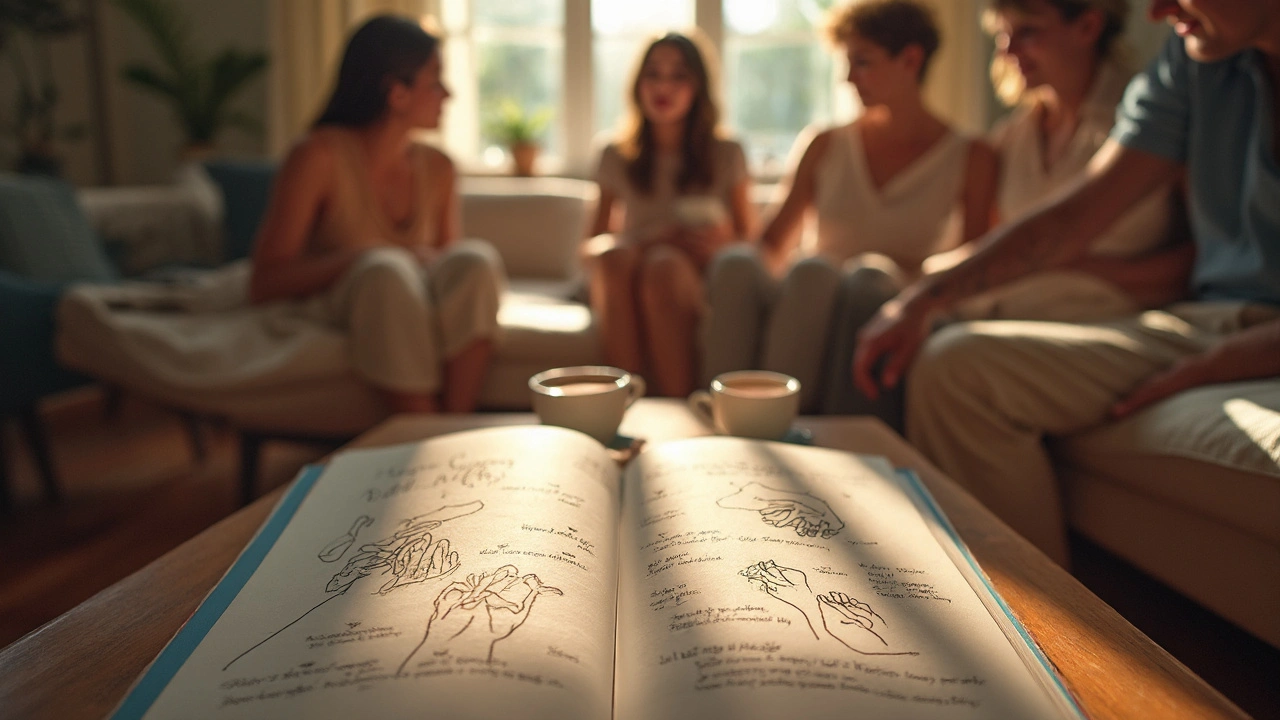When you first hear about Lomi Lomi massage, it might sound mysterious or exotic. But it’s actually a hands-on healing practice that’s been around for generations in Hawaii. What sets it apart? It’s not just about working out muscle knots—there’s this whole vibe of empathy, connection, and flow built into every move.
Lomi Lomi doesn’t look or feel like your average deep-tissue or Swedish massage. Therapists use their forearms, elbows, and even a dance-like rhythm to create long, sweeping movements across your body. Think less poking and prodding, and more of a soothing wave motion. It’s meant to get your blood moving, calm your mind, and leave you feeling lighter inside.
This style isn’t just for backpackers exploring Maui, either. More people are booking Lomi Lomi massages for real problems—stress, stiff necks, or just because life gets a bit too noisy. Heard your mate talk about feeling ‘reset’ after a massage? That’s the Lomi Lomi effect people rave about.
- What is Lomi Lomi Massage?
- The Hawaiian Roots and Meaning
- Benefits You Can Actually Feel
- What Happens in a Session?
- Tips for Getting the Most Out of It
What is Lomi Lomi Massage?
Lomi Lomi massage is more than just a way to relax. It's a technique that started in Hawaii and was passed down through families. Instead of just focusing on muscles, this approach aims to heal both body and mind. If you're expecting the routine of a typical spa massage, get ready for something completely different.
The main thing people notice about lomi lomi massage is the long, flowing strokes. Therapists use their hands, forearms, and sometimes even elbows to glide across your skin. These movements aren’t random—they’re meant to mimic the waves of the ocean, pushing and pulling tension out of your body. Some therapists will even move around the table in a kind of dance, making sure the whole session feels connected and smooth.
Another big difference: Lomi Lomi massagers don’t always stick to one area. While traditional massage can zoom in on just your shoulders or back, Lomi Lomi works on multiple areas at once. This keeps the body relaxed, making it easier for the brain to shut off the stress and just chill out.
It's also common for practitioners to include special touches like breathing techniques or little rituals to help people mentally reset. Still, the style can be adapted to different comfort levels and needs. Some places play Hawaiian music or burn essential oils for extra relaxation, which helps set the mood.
| Fact | Detail |
|---|---|
| Origin | Hawaii, passed down in families for generations |
| Main Technique | Long, flowing strokes with hands, forearms, elbows |
| Session Length | Usually 60 to 90 minutes |
| Used For | Relaxation, stress, muscle tension, mental clarity |
| Common Tools | Massage oil, soft towels, calming music |
If you’ve ever left a regular massage feeling like something was missing, the connected feeling of Lomi Lomi might be what you’re looking for. It’s hands-on, personal, and way more engaging than you’d expect from a standard therapy session.
The Hawaiian Roots and Meaning
Lomi Lomi goes way back in Hawaiian culture—long before it showed up in trendy spas. The phrase actually means “to knead, to rub, or to soothe,” and it was something families passed down. It wasn’t just about easing sore muscles. In old Hawaii, Lomi Lomi was a kind of bodywork you’d get from your elders, handed out at important moments: before big journeys, after illness, or to mark shifts in life. The massage was often seen as a way to connect body, mind, and the wider community.
The heart of Lomi Lomi is the idea of Aloha (love, harmony) and the flow of mana (life energy). Practitioners aren’t just doing a back rub—they’re taught to work with intent, using touch to support healing on a deeper level. The technique changes from village to village; some styles keep things simple, while others add chants or prayers to set a calming mood.
The famous Auntie Margaret Machado helped make Lomi Lomi known worldwide in the late 20th century, teaching both locals and curious foreigners. But even today, the real core stays the same: it’s not a copy-paste routine, but a personalized, respectful approach that honors the person on the table.
If you’re wondering how this Hawaiian practice fits into other therapies, check out some quick facts:
| Fact | Detail |
|---|---|
| Oldest Records | Traced back over 1,000 years in Polynesian history |
| Main Keyword | lomi lomi massage |
| Traditional Practitioners | Often passed down in families, taught over years of observation |
| Modern Schools | Popular across Hawaii, Japan, Australia, USA, and parts of Europe |
That Hawaiian sense of respect for the body, along with the belief that touch can shift energy and bring balance, is still at the center of every Lomi Lomi experience today.

Benefits You Can Actually Feel
With Lomi Lomi massage, people don’t just walk away relaxed—they notice real changes in how their body and mind feel. Even after one session, you’ll probably sense less muscle tension and a surprising boost in mood. It's not hyped-up claims; there’s legit research comparing Lomi Lomi to other massage types showing a drop in stress hormones and better sleep.
The sweeping, rhythmical movements aren’t just for show. They help with:
- Improved blood flow—moving out the sluggish feeling you get after sitting too long
- Soothing sore or tight muscles, especially after workouts or hectic workdays
- Reducing anxiety—lots of people literally fall asleep during a session
- Helping your body flush out toxins, which can leave you feeling more energized
- Boosting your immune system (there’s early research hinting at stronger white blood cell response after regular massages)
One thing that stands out: it’s not just physical. Because the massage uses flowing waves and connects different parts of your body, some folks say it helps them let go of old worries or bad habits. There’s this blend of physical relief and emotional reset that a typical massage just doesn’t offer.
| Benefit | What You'll Notice | Backed by Studies? |
|---|---|---|
| Physical relaxation | Looser muscles, less stiffness | Yes |
| Mental clarity | Calmer mood, less fogginess | Yes |
| Better sleep | Deeper, longer rest at night | Yes |
| Detox support | Feeling lighter, fewer headaches | Some evidence |
So, if you’re looking for something more than a back rub, lomi lomi massage could be the reset button you didn’t know you needed. The difference is real—and you’ll feel it not just in your shoulders, but in your whole outlook.
What Happens in a Session?
Walking into a Lomi Lomi massage session feels different right from the start. The room isn’t your usual spa setting. Usually, the space is a bit warmer, with soft island music or simple silence. Don’t be surprised if the therapist takes a moment to connect with you first—think of it as a quick chat to set intentions and talk about any sore areas or things you want them to focus on.
Most of the time, you’ll be asked to lie right on the massage table with a large towel or sheet for coverage. Some therapists use oils—coconut or macadamia nut oil is common—which helps their hands and forearms glide easily along your skin. Sessions often begin with gentle pressing or rocking motions to help you relax.
Here’s what makes it different: the therapist uses their hands, forearms, and sometimes elbows for broad, flowing strokes down the length of your body. It almost feels like ocean waves moving over you. These motions are not random—they’re designed to support blood flow, move tension, and encourage your body to let go. Unlike a typical back-and-forth routine, the therapist might work on different spots at the same time, like one forearm gliding over your back while the other soothes your leg.
During a lomi lomi massage, your therapist works with a rhythm that can be slow and calming or faster if you like deeper pressure. Deep breaths are encouraged. Some sessions may include simple stretching or joint rotations to loosen you up even more.
- Expect a full-body treatment, not just a focus on one tight muscle group.
- Some therapists may say a short prayer or set an intention quietly at the start—this is a nod to Lomi Lomi’s cultural roots.
- Communication matters. If you have injuries or strong preferences, speak up before and during the session.
The session usually ends as quietly as it began, wrapping up with some gentle sweeps to leave you feeling balanced. Most people say you’ll get off the table with a clear mind, feeling like all the noise in your head has faded away for a bit.

Tips for Getting the Most Out of It
If you want to make the most out of your lomi lomi massage, there are a few things that really make a difference. It’s more than just showing up and hoping for the best—the little choices you make matter.
- Arrive early: Getting there 10-15 minutes ahead gives you time to settle, fill out any forms, and start switching off from your regular worries.
- Chat with your therapist: Let them know if you have sore spots, injuries, or you just hate having your feet touched. They’re not mind readers. The more open you are, the better they can adjust everything to suit you.
- Stay hydrated: Massage gets your blood and lymphatic system going, so water helps flush out those toxins you’ve stirred up during the session.
- No rush afterwards: If you can, don’t book anything stressful right after. Give yourself time to soak up that loose, relaxed feeling.
- Eat light beforehand: Having a full meal right before a massage? Bad move. Stick to something small so you’re comfortable on the table.
Lots of spas in Hawaii and Australia say their lomi lomi sessions last between 60–90 minutes. Turns out, based on a survey by SpaFinder in 2024 (750 clients surveyed), 85% said they got better results when they didn’t squeeze back-to-back plans around their massage. They felt less rushed and enjoyed the effects for longer.
| Tip | Why It Helps |
|---|---|
| Arrive Early | Reduces stress; more mindful start |
| Speak Up About Preferences | Personalizes the massage for better comfort |
| Stay Hydrated | Helps body process toxins |
| Avoid Heavy Meals | Prevents discomfort lying face-down |
| Plan for Downtime After | Keeps benefits going longer |
One last thing—if you’re not used to a lot of touch, it’s normal to feel a bit vulnerable on the table. If something feels off, just say so. The whole experience is better when you feel mentally and physically safe. Trust me, you’ll walk away feeling like you did something good for yourself, not just your sore muscles.

